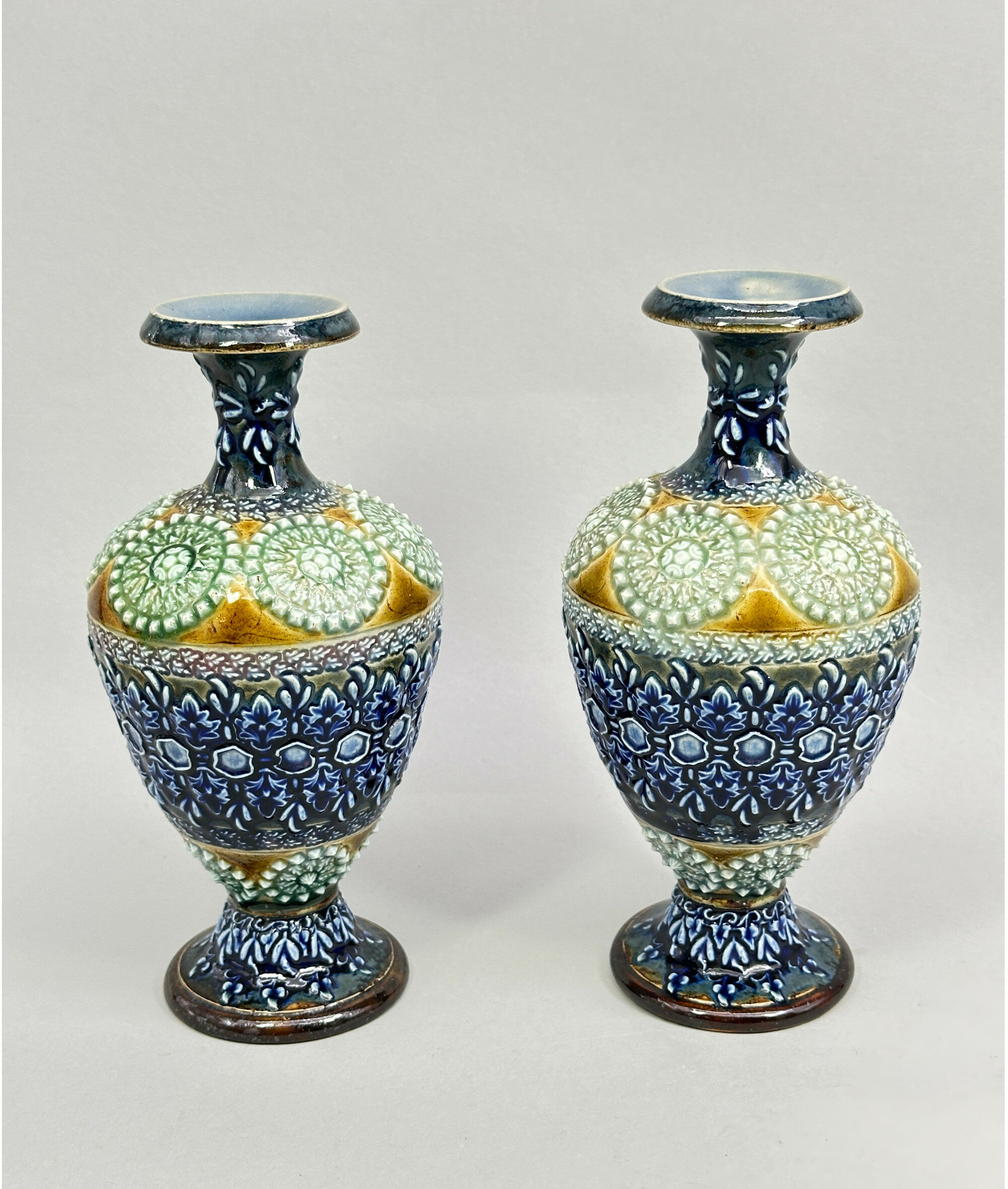
Pair of Doulton Lambeth Vases, signed and dated 1882
Price: £150The Doulton factory began production in 1815, first at Vauxhall and later moving to Lambeth. In 1882 it opened an additional factory at Burslem, Stoke on Trent in the centre of the English pottery. Known at first mainly for utilitarian works it began to develop decorative wares more extensively in the 1860s and soon gained a reputation for its distinctive designs. As the factory mark indicates, these pieces were made at the Lambeth factory and the absence of ‘England’ below it indicates that it dates to before 1891. The Lambeth ware pieces were often marked with the date of manufacture, here 1882 which is fully consistent with a design inspired by Eastern influence. The artist’s mark, ‘B’ with a tail, which appears on both pieces, is for Alice L Burlton, whose signature can be seen on other pieces of a similar date with similar raised decoration. The other three markings ‘B’ and ‘OO’ presumably indicate the pattern number.
In general, Doulton designs were often both striking an experimental and this pair of vases is an example of their work at its best, a striking form combined with skilful decoration making them true collector’s items.
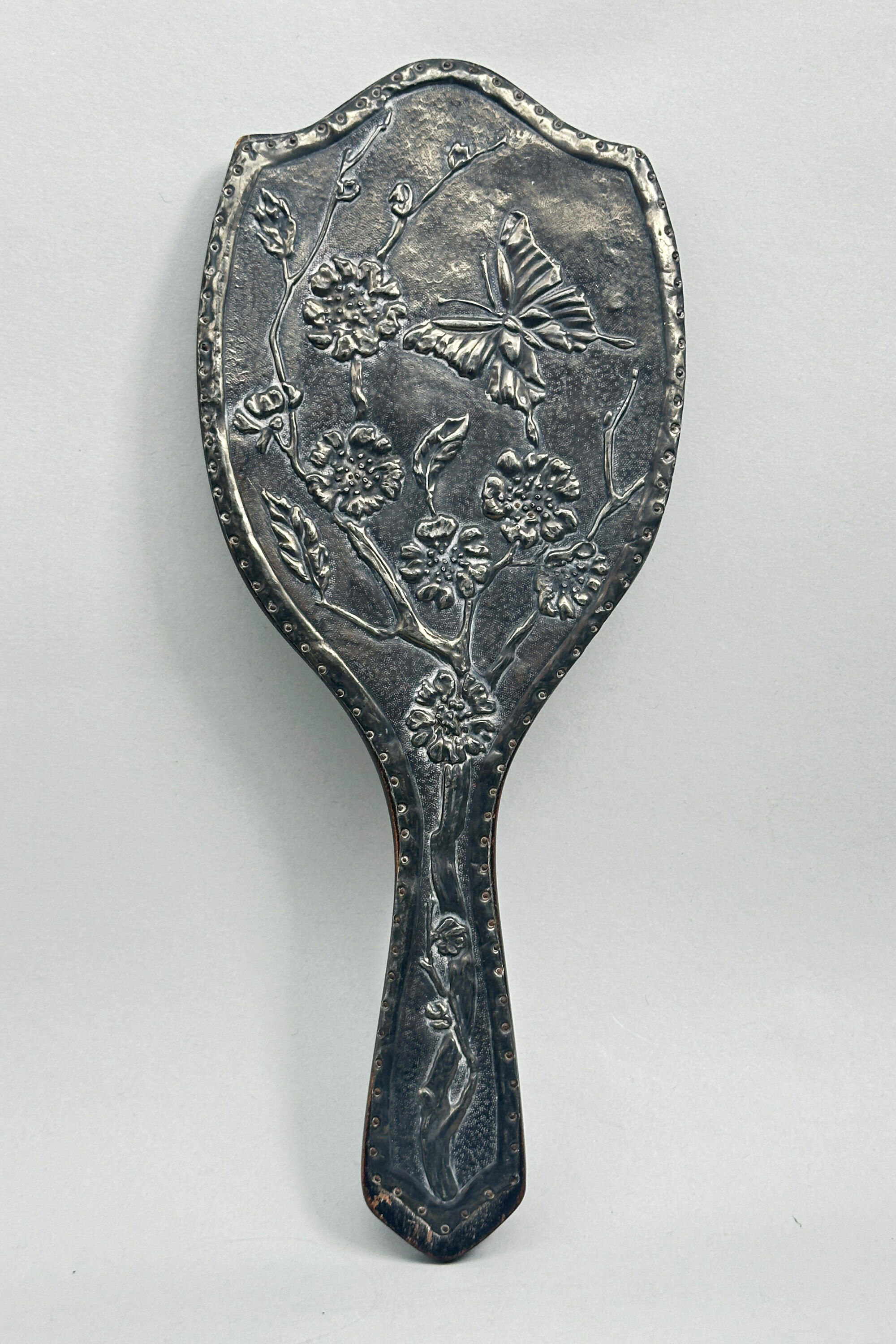
Arts and Crafts Hand Mirror with Repousse Decoration, circa 1900
Price: £55Elements of two contrasting contemporary styles combine here with features from both the Arts and Crafts and the Art Nouveau movement. The hammered pewter with the almost rustic nail head fixings and the red bead reflect the former but the elegant depiction of the lotus and butterfly, with more than a hint of the Orient, reflect the latter. The maker is anonymous but doubtless British and clearly a highly skilled craftsman. Much thought and expertise went into the design of this piece which would be a desirable addition for collectors of either or both of the pieces made under the influence of these two highly popular design movements.
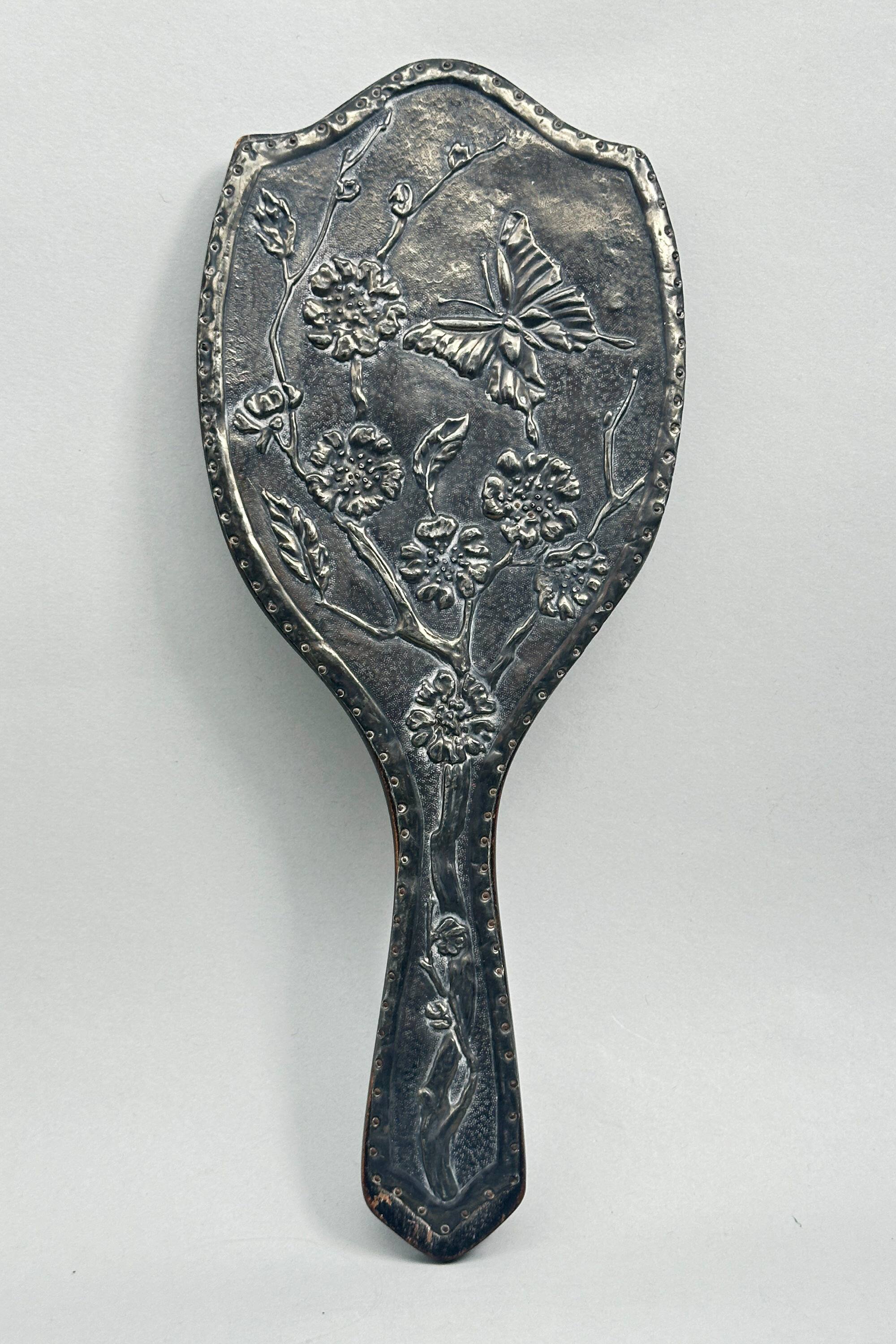
Arts and Crafts Hand Mirror with Repousse Decoration, circa 1900
Price: £55Elements of two contrasting contemporary styles combine here with features from both the Arts and Crafts and the Art Nouveau movement. The hammered pewter with the almost rustic nail head fixings and the red bead reflect the former but the elegant depiction of the lotus and butterfly, with more than a hint of the Orient, reflect the latter. The maker is anonymous but doubtless British and clearly a highly skilled craftsman. Much thought and expertise went into the design of this piece which would be a desirable addition for collectors of either or both of the pieces made under the influence of these two highly popular design movements.
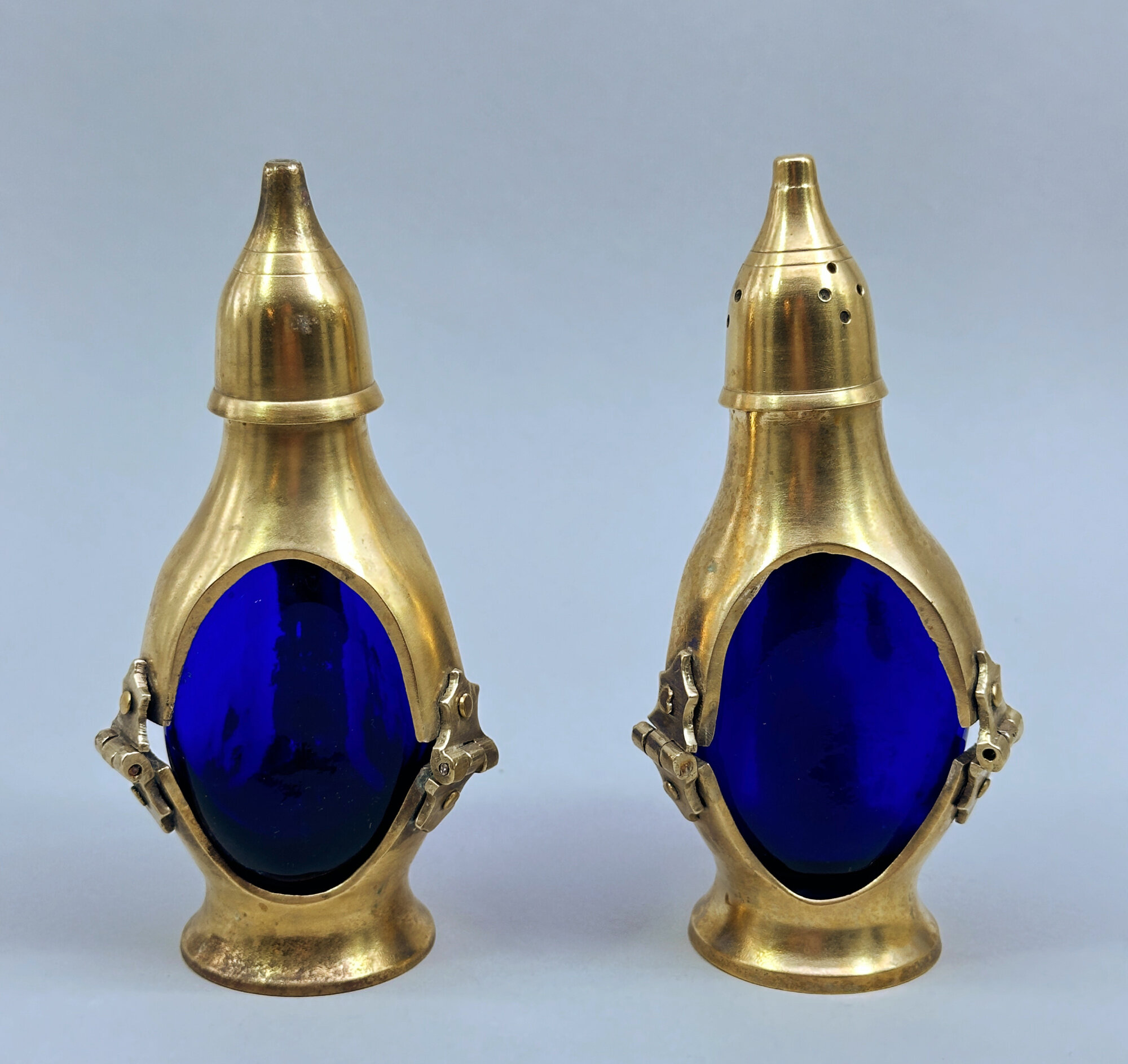
Arts and Crafts Brass and Cobalt Glass Salt and Pepper, early C20th
Price: £55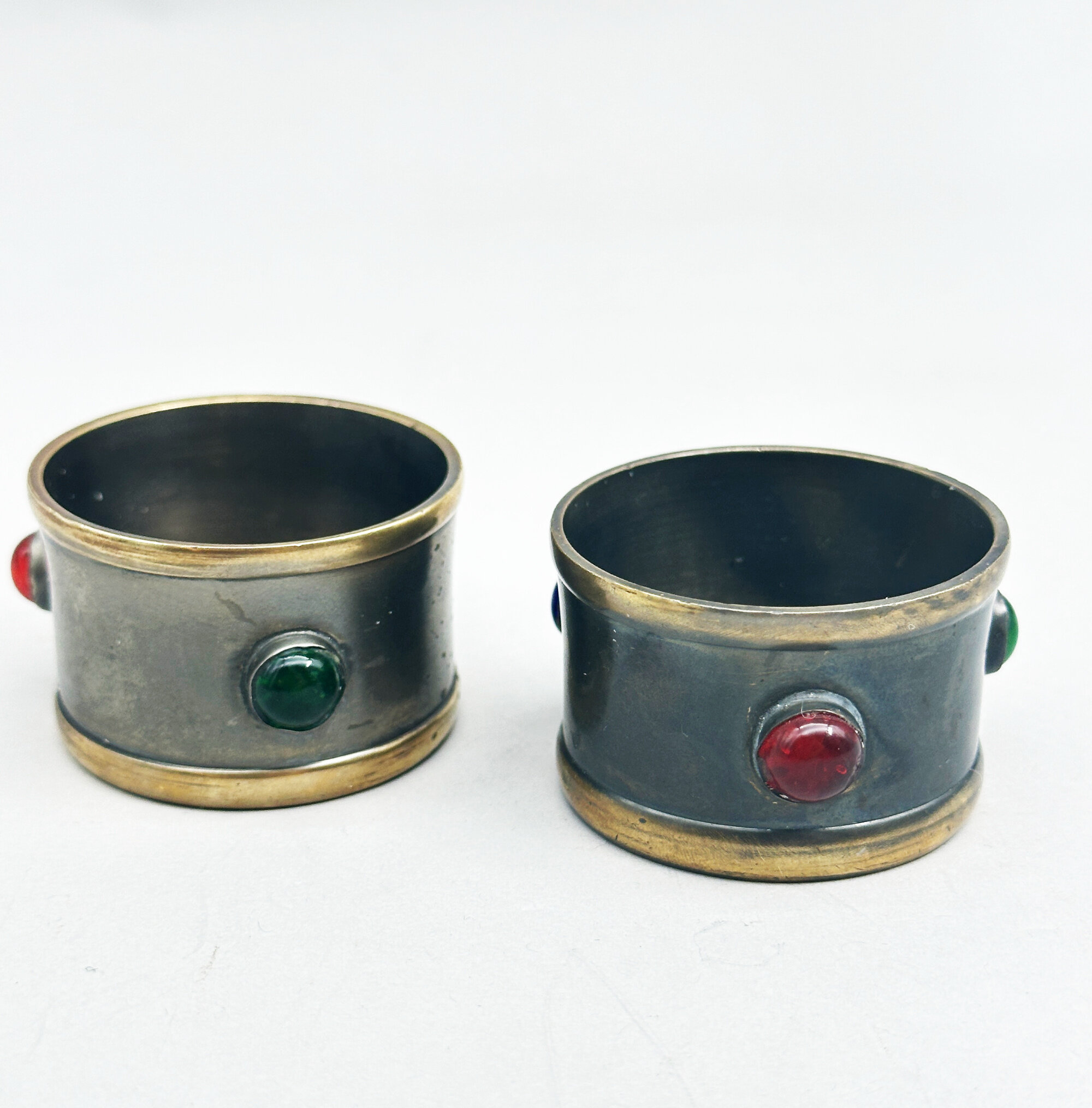
Pair of Arts and Crafts Pewter Salts, early C20th
Price: £45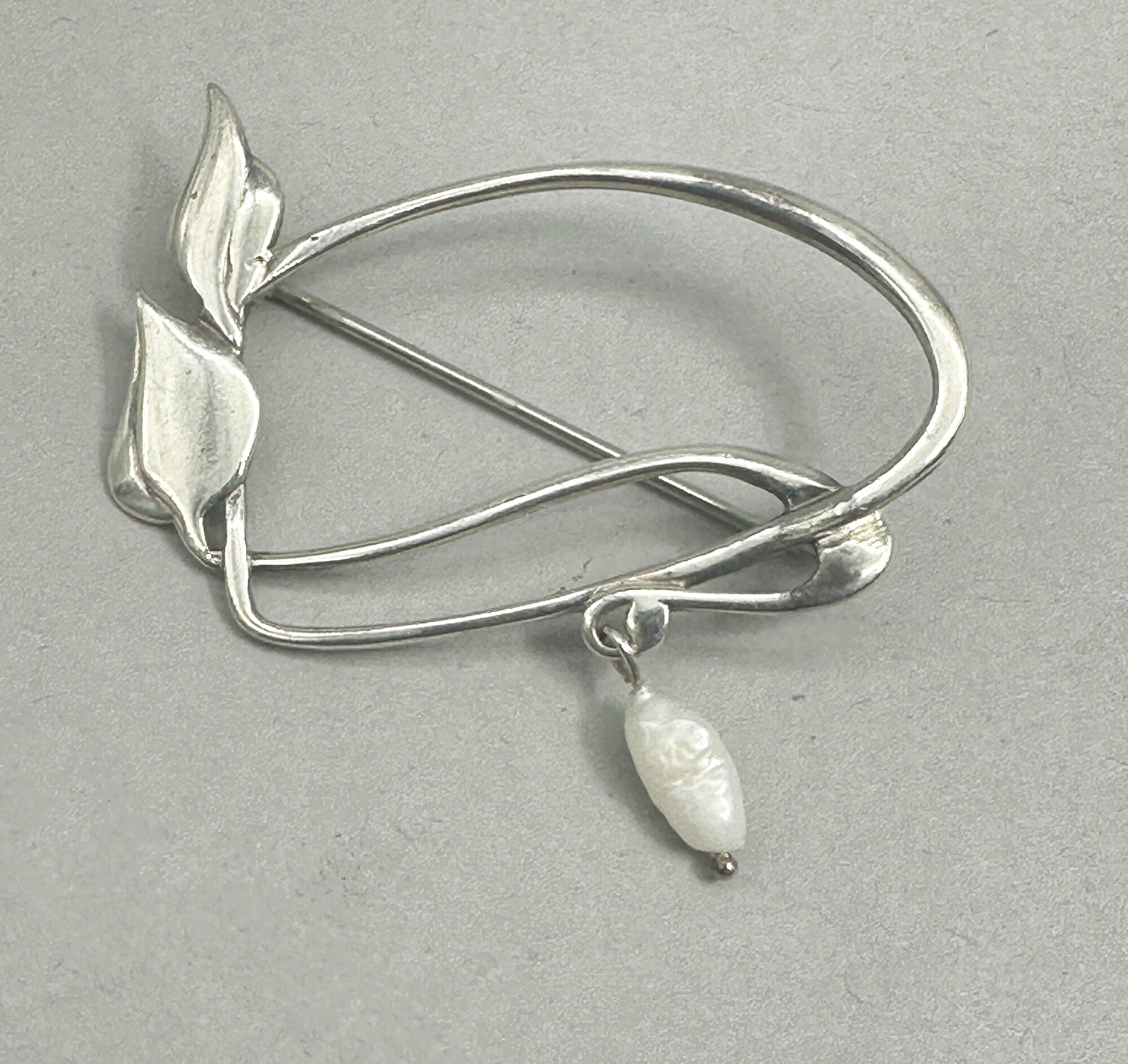
Rennie Mackintosh Arts and Crafts silver brooch
Price: £25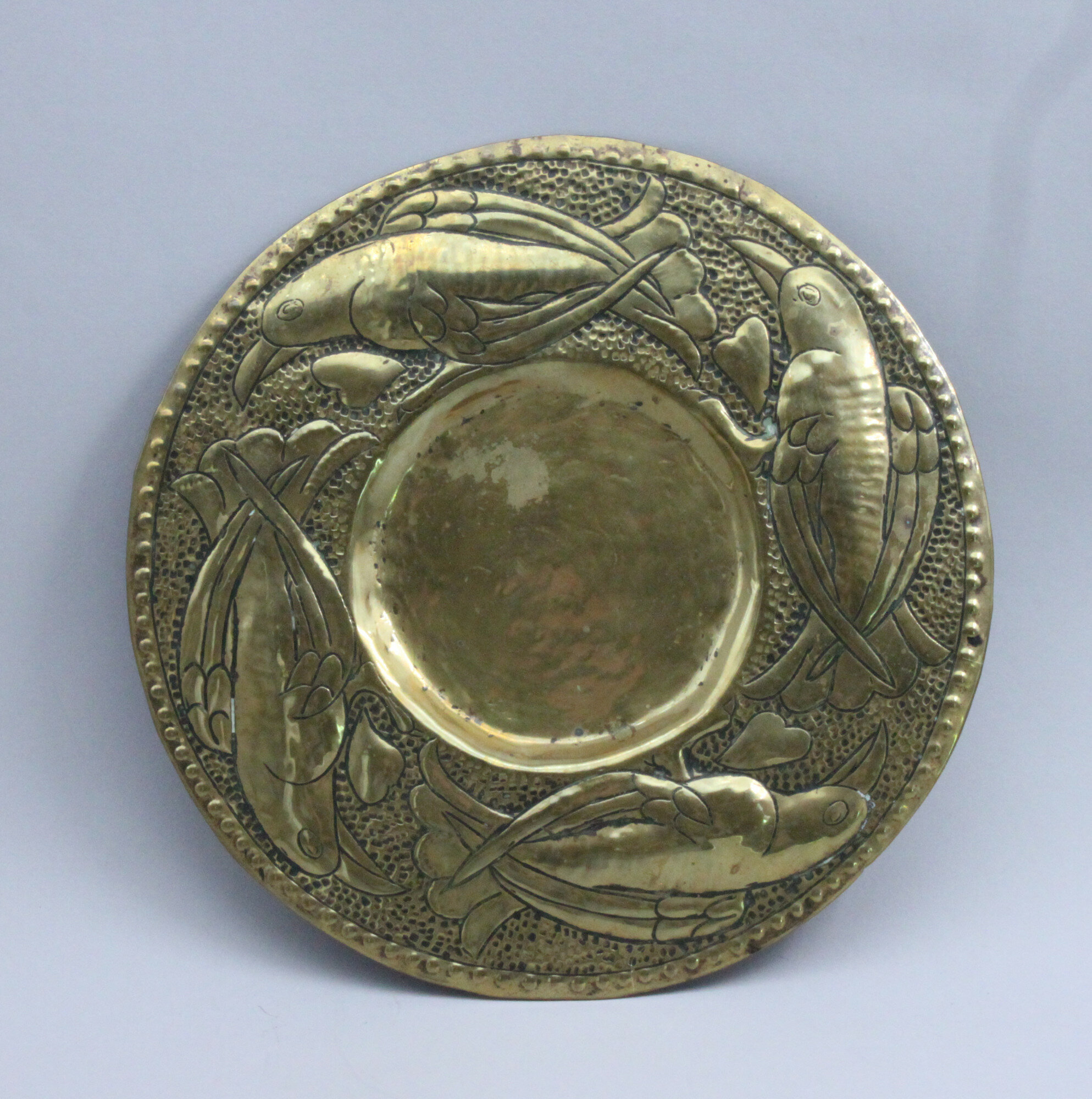
An Arts and Crafts small Brass Tray, English early twentieth century
Price: £40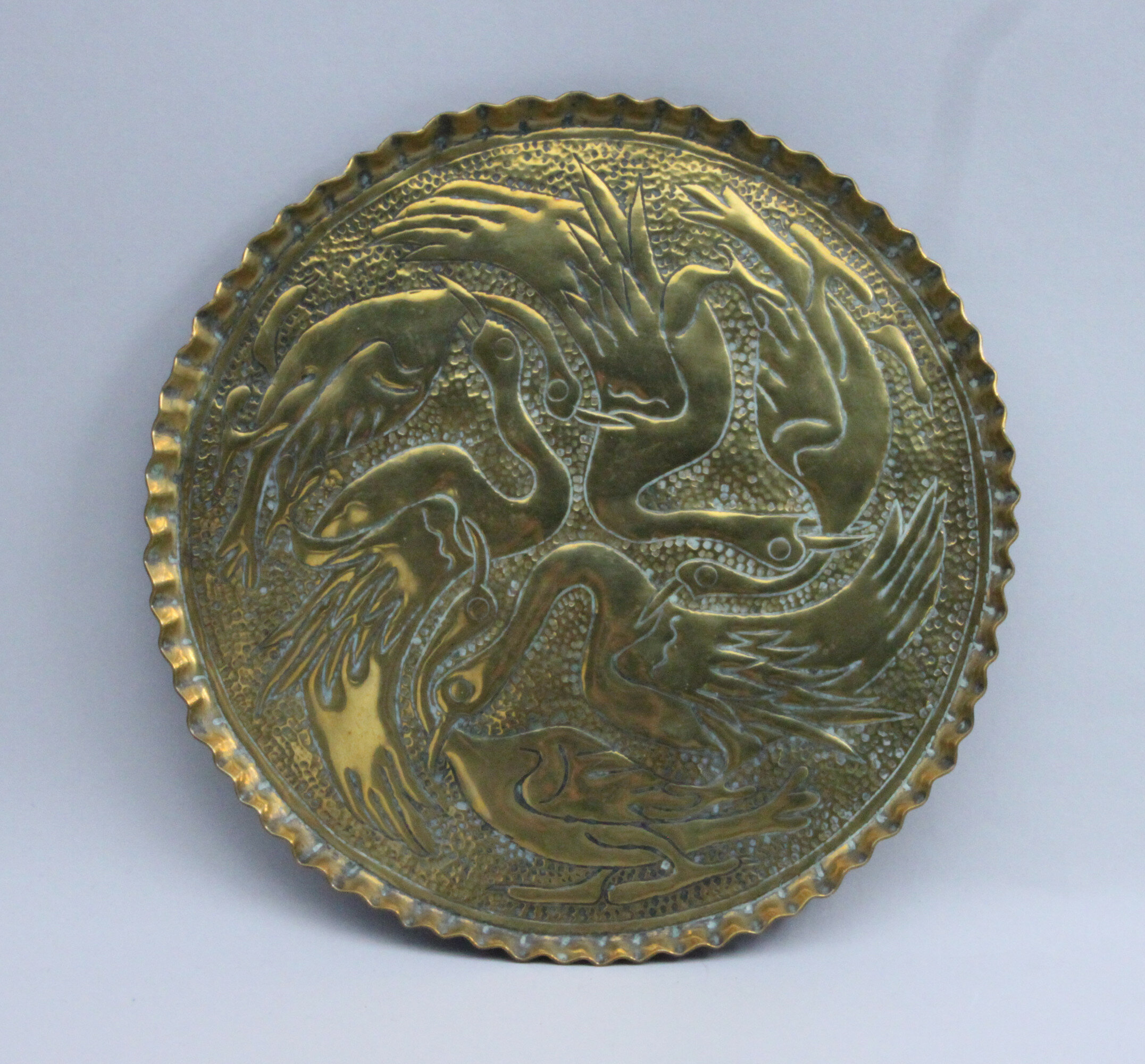
An Arts and Crafts small Brass serving Tray, English early twentieth century
Price: £40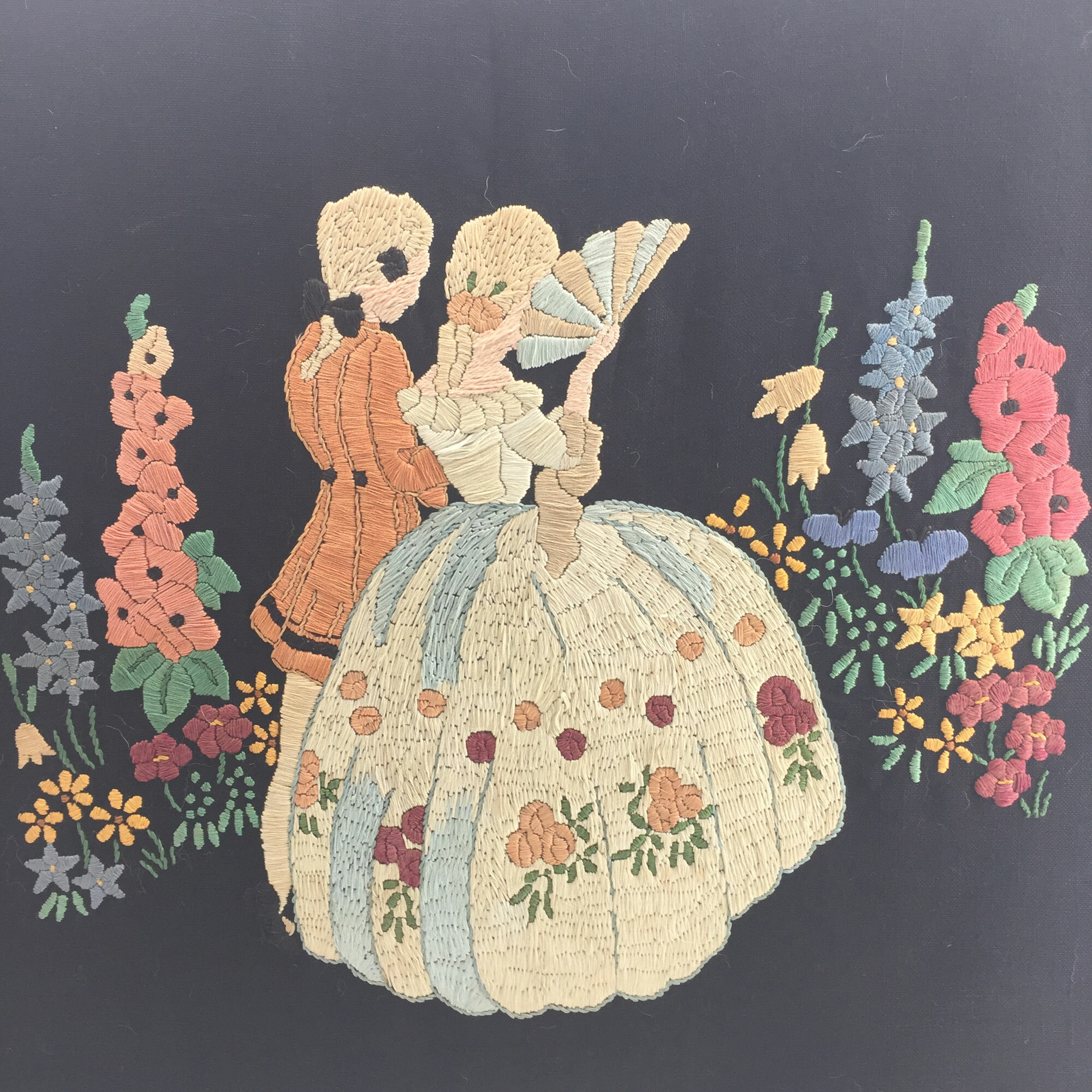
Arts and Crafts Stumpwork Firescreen 1900
Price: £25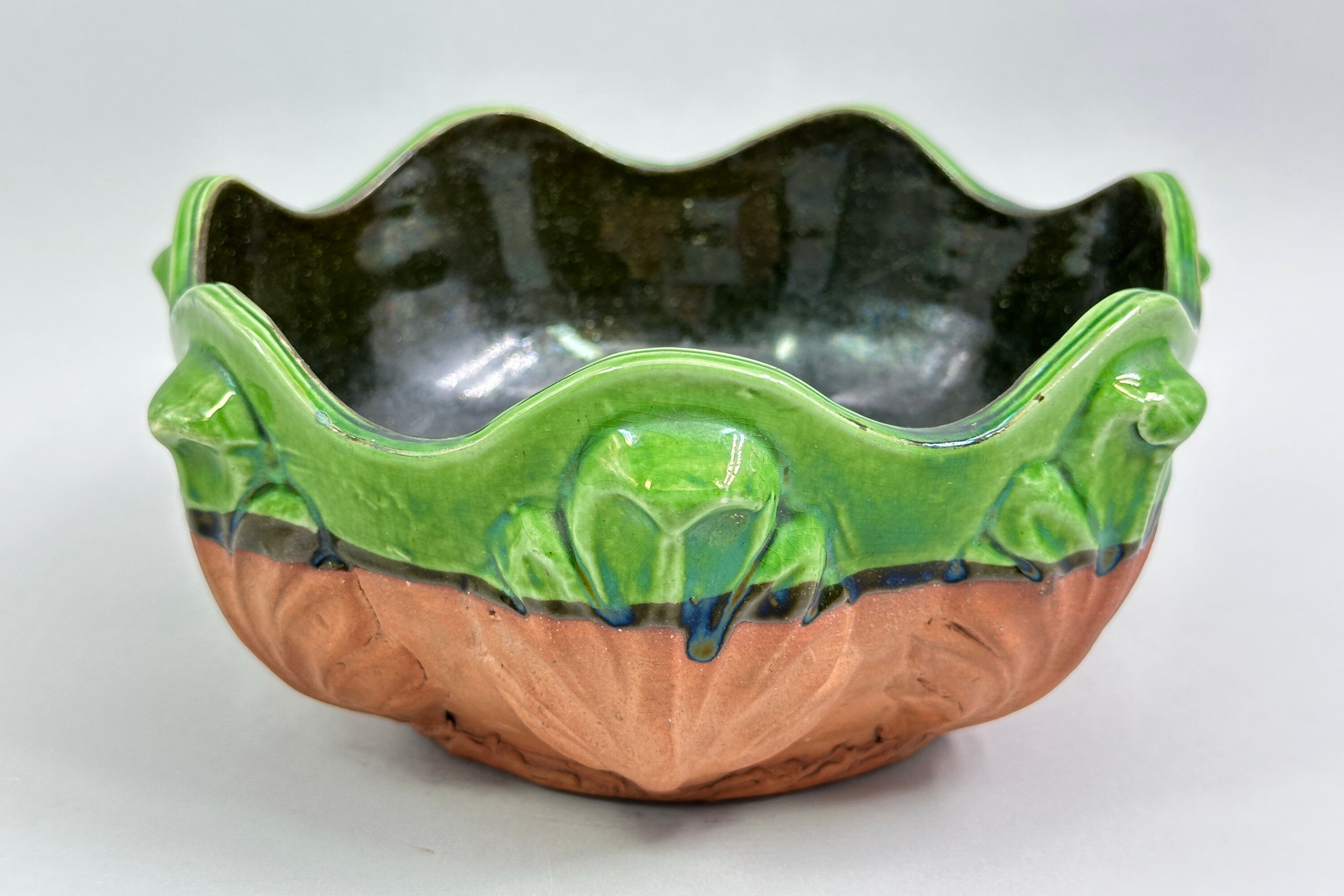
A Brannam Bowl, Barum ware, Terracotta and Glaze, marked C.H.Brannam, circa 1900
Price: £45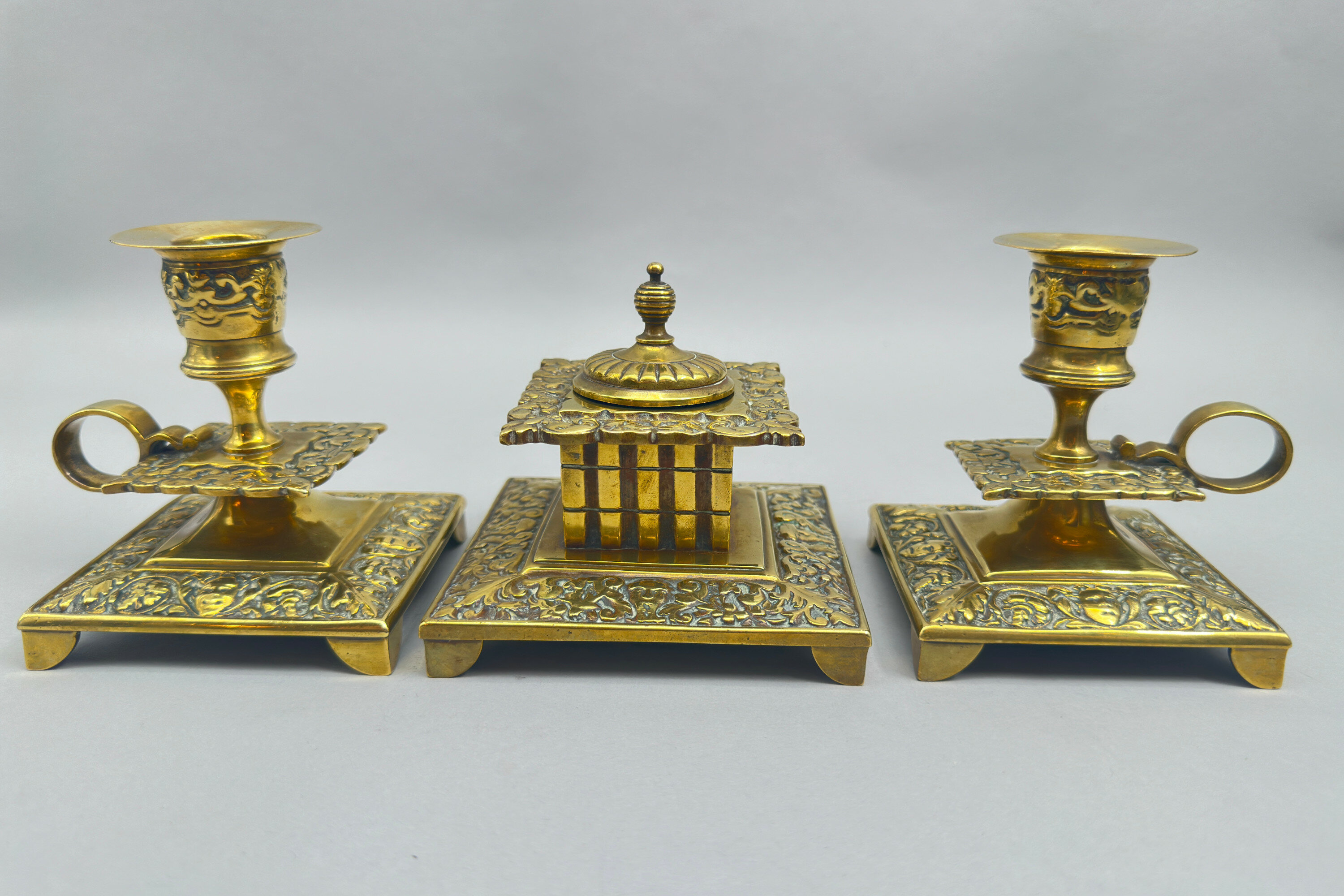
Renaissance Revival Brass Desk Set, English c 1900
Price: £55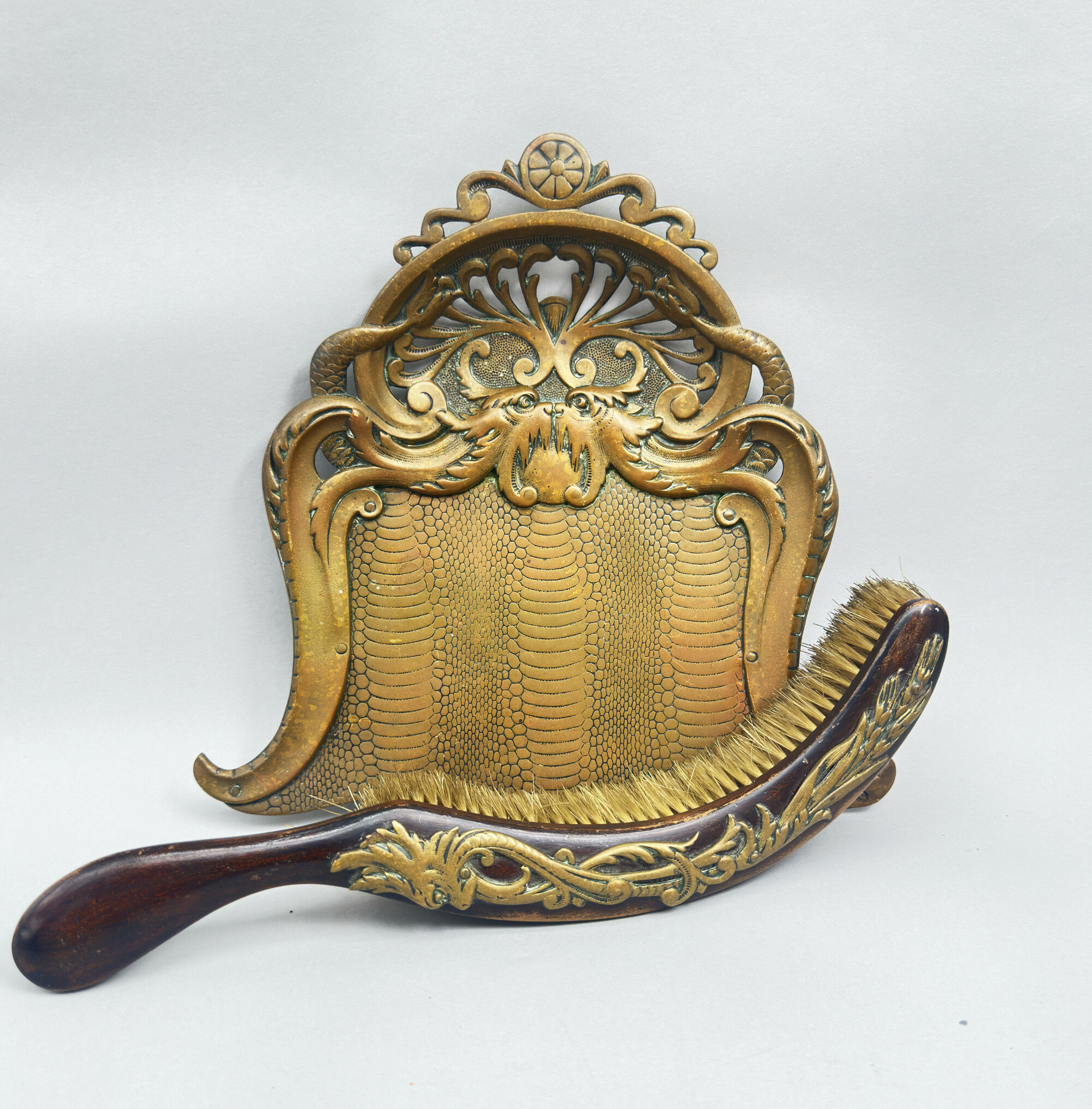
Townshend & Co : Butler’s Crumb Tray and Matching Brush, Birmingham c1900
Price: £75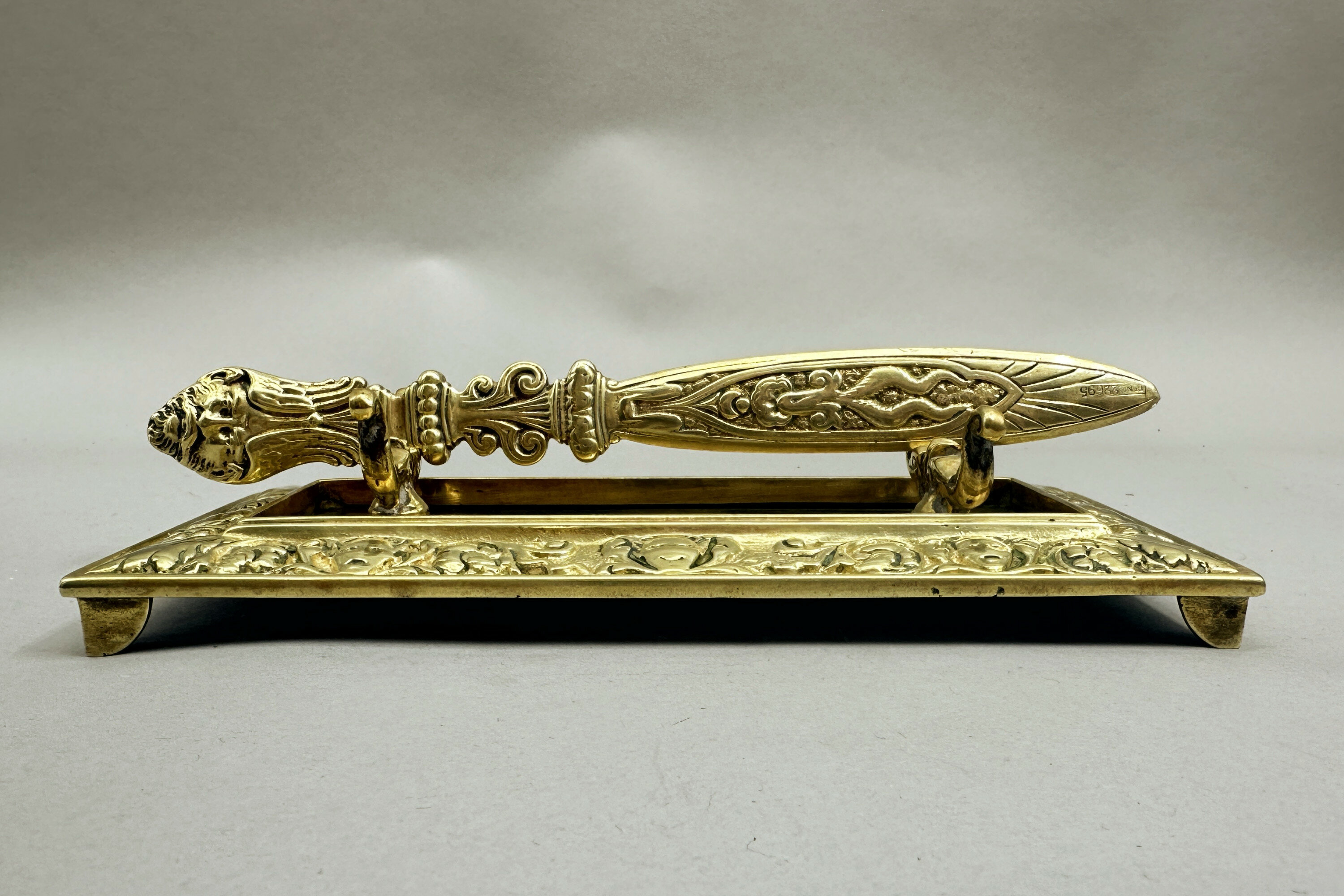
Renaissance Revival Letter Opener and Stand, English, c1900
Price: £25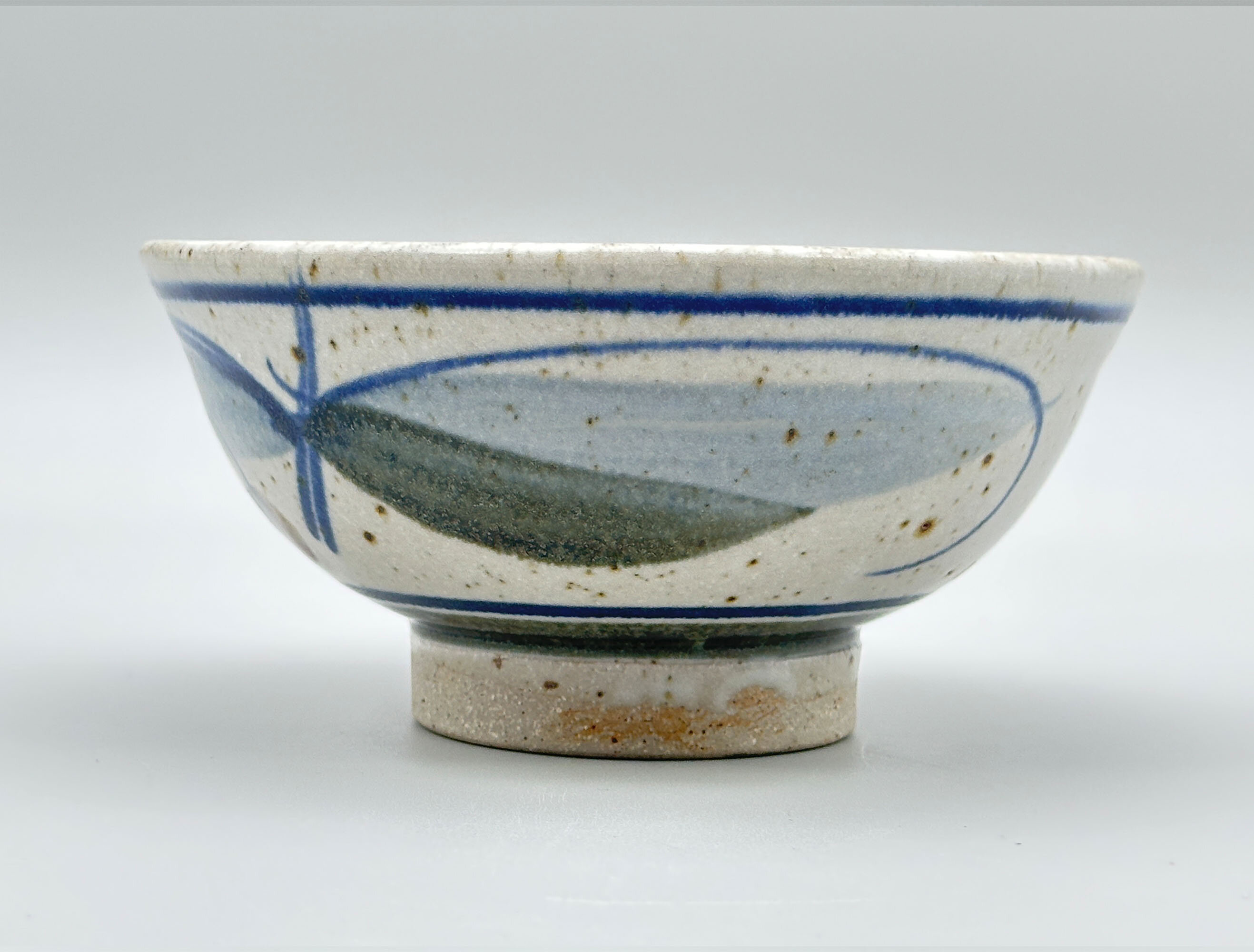
Studio Pottery Bowl, possibly Derek Clarkson (1928-2013) with impressed mark, C20th
Price: £55While it is not absolutely certain the mark on this piece is possibly that of Derek Clarkson (1928-2013). Clarkson trained at the Manchester college of Art between 1944-47 and Burnley School of Art from 1959-61 and then combined a successful lecturing career with the making of his own work which is now to be found in international and private collections including the Victoria and Albert Museum, London. In 1980 he retired from lecturing to focus on his work as a potter, continuing to produce pieces of great skill and attraction until his death in 2013. There are other pieces signed by him which strongly resemble the bowl here (see images 11,12) making it a possibility that this is his work. Certainly, the potter who created this piece and impressed his mark at the bottom was clearly accomplished and this bowl is more than worthy to stand comparison with pieces by more famous contemporaries.
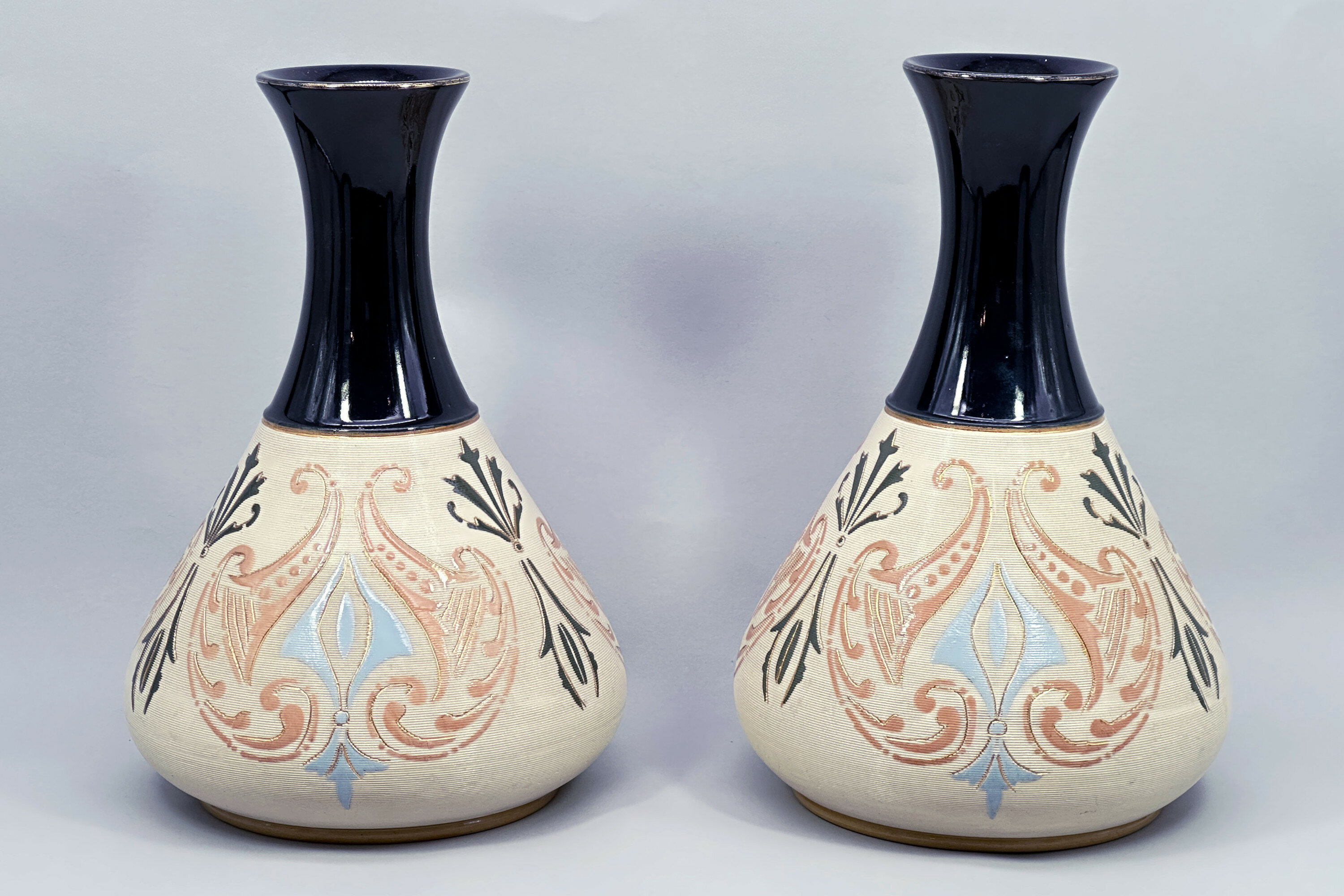
Pair of Lovatt and Lovatt Earthenware Vases, early C20th
Price: £95The Langley Mill Pottery was located in Langley Mill, Derbyshire on the Derbyshire – Nottinghamshire border. From its establishment in 1865 to its final closure in 1982, it went through five distinct periods of ownership, producing a wide range of stoneware ranging from utilitarian items and to high quality art pottery. This pair of vases dates from the third company that traded there, Lovatt and Lovatt. The Lovatt family had entered into partnership with the owner of the founding business at Langley Mill, James Calvert. From 1895 the business was in sole control of the Lovatt family and traded as ‘Lovatt and Lovatt’ until 1935. The early years of the twentieth century proved to be something of a zenith for them and a wide range of art pottery pieces were made which enjoyed great popularity. Production techniques were streamlined without a reduction in quality and in 1905, leadless glazes were introduced. These are proudly announced on the base of this pair of vases which are a fine example of the Lovatt and Lovatt style and probably date to 1913, indicated by the impressed numbers for that year.